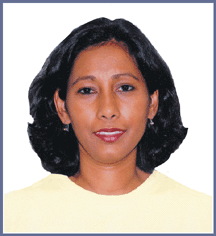 February 2013
February 2013OPENING POSITION
 February 2013
February 2013With all the talk about the “fiscal cliff,” I can’t help but think about what we can do to prevent the trading systems that we poured our hearts and souls into from falling off their own version of a cliff. It really makes you take risk management much more seriously. There are several risk measures you can use, yet how often do we really watch things like the CBOE skew index (SKEW), Euro STOXX 50 volatility, or even the volatility index (VIX)? The VIX is often thought of as something that is only useful for option traders, but it can be a useful tool for all traders. The VIX is considered to be a fear gauge, so it has its merits as a warning signal.
If you think about it, people trade options mostly to hedge their positions. This tells you almost instantly that option traders are motivated by fear. Given how volatile this market can be, it may be in our best interests to be fearful of the market. It is challenging to determine whether a retracement is just that or if it is a reversal.
Keeping an eye on a risk measure such as the VIX is something we all need to start implementing. Sometimes we get too comfortable watching price movements or indicators we always use; sometimes we forget to think outside of our comfort zone. Unfortunately, that can eat into our profits.
Besides the VIX, there are other indicators you can use to measure risk. You may find that some work better than others, just like any technical indicator. You may also find that some work better when the market is behaving a certain way. This is nothing new in the field of technical analysis. A bunch of indicators work well in a trending market, while others work well in a sideways market.
In this issue, we have included an article titled “The Volatility (Regime) Switch Indicator” by Ron McEwan. Regime switching indicators are extremely complicated, but this is a simplified version. This indicator uses volatility to indicate whether the market is trending or mean reverting. Based on the direction of the market, you select an indicator to apply. The article starts here.
Regardless of which direction the market is moving, what is important is that you not lose sight of the big picture. These days, the markets are influenced by what is happening all around the world, as you will find out from our interview with Brad Reinard, which starts here. You need to be aware of everything, and most important, get used to keeping an eye on at least one risk measure.

Jayanthi Gopalakrishnan, Editor